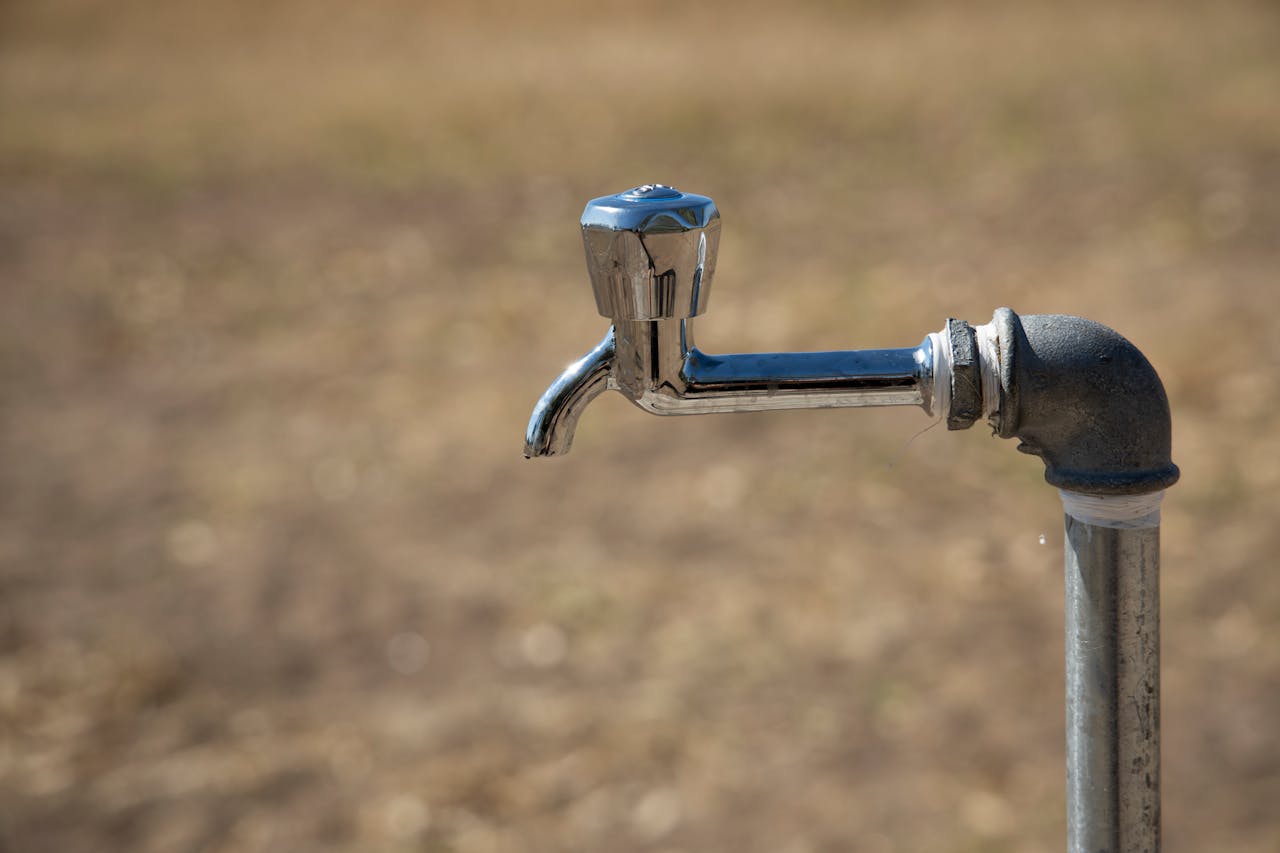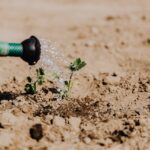Why is Water Running Out? A Look at the Leading Causes of Scarcity

Water scarcity is becoming an alarming reality worldwide. It’s a crisis that affects people from bustling cities to remote villages, crossing borders and cultures. Imagine turning on a tap and nothing comes out, or seeing a once-full lake reduced to a muddy puddle. This is the reality for many, and it’s a growing concern for us all.
Understanding why water is becoming scarce is crucial. It’s the first step in finding solutions to ensure everyone has access to this vital resource. After all, water isn’t just something we drink – it’s essential for growing food, maintaining hygiene, and supporting ecosystems.
Climate Change: A Major Culprit
Climate change is significantly impacting our water resources. Rainfall patterns are shifting unpredictably. Some areas that once had reliable rainy seasons now experience prolonged droughts, while others face overwhelming floods.
Rising global temperatures are causing faster evaporation of surface water. Lakes and rivers are shrinking more quickly, like a glass of water left out in the sun.
In colder regions, glaciers and snowpacks that have long served as natural water reservoirs are melting rapidly. This may temporarily increase water flow but ultimately leads to long-term water shortages.
The Pressure of Population Growth
As the world’s population grows, so does the demand for fresh water. More people means more water needed for drinking, cooking, and personal hygiene.
Rapid urbanisation is concentrating water demand in cities. Urban areas require vast amounts of water not just for residents, but for businesses, industries, and public services.
Changes in lifestyle often accompany economic development. As people become more affluent, water usage tends to increase – think of more frequent laundry cycles, long showers, or maintaining green lawns in dry areas.
Agriculture: A Thirsty Sector
Agriculture is the largest consumer of fresh water globally. Many farming practices are water-intensive and sometimes inefficient. Flood irrigation, for example, uses more water than necessary, with much lost to evaporation.
The choice of crops greatly affects water consumption. Some popular crops, like rice or cotton, require significantly more water than others. As demand for these products grows, so does the strain on water resources.
In many areas, farmers are over-extracting groundwater for irrigation. This is like withdrawing money from a bank account faster than it can be replenished – eventually, the account runs dry.
Industrial Water Consumption
Industries use vast amounts of water in manufacturing processes. From textile production to paper making, water is a key component in creating many everyday items.
Energy production is a hidden water consumer. Power plants need water for cooling, and hydroelectric dams rely on consistent water flow. As energy demand increases, so does the water required to produce it.
Extractive industries like mining and oil drilling also use significant amounts of water. These activities often compete with local communities for water resources, especially in water-scarce regions.
Water Pollution: Reducing Usable Supply
Pollution effectively reduces the amount of usable water available. Industrial wastes released into rivers and lakes can render water unusable or expensive to treat.
Agricultural runoff, laden with fertilisers and pesticides, contaminates both surface and groundwater. This not only affects drinking water but also disrupts aquatic ecosystems.
In many areas, especially where sanitation infrastructure is lacking, domestic sewage and urban waste find their way into water sources. This pollution poses serious health risks and further diminishes the available clean water supply.
By understanding these factors, we can begin to address the complex issue of water scarcity. It’s a global challenge that requires both local action and international cooperation.
Mismanagement of Water Resources
Poor management of our water resources is a significant problem worldwide. In many places, ageing infrastructure like old pipes and water systems leads to substantial water loss. Imagine trying to water a garden with a hose full of holes – that’s essentially what’s happening in many cities and towns.
Water governance is often ineffective, with poor planning and unequal distribution. Some areas receive more than they need, while others face shortages. This imbalance creates unnecessary strain on our limited water supplies.
There’s also a lack of investment in water technologies and infrastructure improvements. While the initial costs may be high, these investments are crucial for long-term water security.
Deforestation and Land Use Changes
The loss of forests worldwide is having a severe impact on our water cycles. Trees play a vital role in the water system, helping to regulate rainfall and maintain soil quality. When we cut down forests, we disrupt this natural balance.
Land clearing for agriculture or urban development often leads to soil erosion. Healthy soil acts like a sponge, absorbing and storing water. Without it, rainwater simply runs off, often causing floods and reducing the water available for use.
Forests also serve as nature’s water purifiers. As water moves through forest ecosystems, it’s naturally filtered and cleaned. Losing these natural filtration systems puts additional pressure on our water resources.
Economic Factors
The economics of water is complex and impacts its availability and use. Water pricing plays a crucial role – if it’s too low, it may lead to waste, but if it’s too high, it can limit access for those who need it most.
The concept of “virtual water trade” is becoming increasingly important. This refers to the hidden flow of water in the production and trade of goods. For example, water-scarce countries might import water-intensive crops rather than growing them domestically.
Economic disparities often translate into unequal access to water. In many parts of the world, wealthier areas have better water infrastructure and access, while poorer regions struggle with shortages and contamination.
Geopolitical Issues
Water doesn’t recognize political boundaries, which can lead to conflicts. Many of the world’s major rivers and lakes cross international borders, requiring cooperation between countries for effective management.
Political instability in some regions makes it challenging to implement long-term water management strategies. In areas of conflict, water infrastructure can be damaged or neglected, worsening scarcity issues.
Water is sometimes used as a political tool, with access to water resources leveraged in negotiations or conflicts. This politicisation of water can hinder equitable distribution and sustainable management.
Technological Challenges and Opportunities
Technology offers both challenges and opportunities in addressing water scarcity. Desalination, the process of removing salt from seawater, holds promise for coastal areas but is energy-intensive and expensive.
Water recycling and reuse technologies are advancing, allowing us to clean and repurpose water that would otherwise go to waste. However, these systems require significant investment and careful management to ensure safety.
Smart water management systems, using sensors and data analytics, can help optimise water use and detect issues like leaks quickly. While these technologies are promising, they require infrastructure and expertise that may not be readily available in all areas.
These technological solutions offer hope, but they also present challenges in terms of cost, energy use, and implementation. Balancing these factors is crucial as we work towards sustainable water management for the future.
Conclusion
The global water crisis is a complex tapestry of interconnected challenges. From climate change altering weather patterns to population growth straining resources, from agricultural demands to industrial consumption, the causes of water scarcity are as diverse as they are pressing. This complex web of factors demands a multifaceted approach to solutions.
Understanding the root causes of water scarcity is crucial, but it’s only the first step. The urgency of this issue cannot be overstated. Water is not just a commodity; it’s the cornerstone of life, health, and prosperity. Its scarcity threatens not only our daily lives but also global food security, economic stability, and ecological balance.
As we face this challenge, it’s important to recognize that everyone has a role to play. Individual actions, from conserving water at home to making informed consumer choices, can collectively make a significant impact. Communities can work together to protect local water sources and implement efficient usage practices. Governments and international bodies must collaborate on policies that address transboundary water issues and promote sustainable management.
However, tackling water scarcity requires more than just individual and governmental efforts. It needs the support and expertise of dedicated organisations working on the ground. This is where AquaMaya comes in.
AquaMaya, a US-based nonprofit, is at the forefront of bringing clean, safe, and sustainable water solutions to communities in West Africa. Their mission aligns perfectly with the urgent need to address water scarcity and its far-reaching consequences. By focusing on improving health, reducing waterborne diseases, and fostering economic development through access to clean water, AquaMaya is making a tangible difference in the lives of those most affected by water scarcity.
What sets AquaMaya apart is the commitment we have to working closely with local communities. We don’t just provide water; we implement comprehensive water infrastructure projects, educate on crucial hygiene practices, and ensure long-term sustainability. This approach addresses not only the immediate need for clean water but also the broader issues of health and economic development that are naturally linked to water access.
By leveraging innovative technologies and collaborating with partners on the ground, AquaMaya is creating lasting change. Their work is a testament to the power of focused, community-centred efforts in tackling global challenges.
As we conclude our exploration of water scarcity, it’s clear that the path forward requires collective action. Join us at AquaMaya in our mission to make clean water a reality for all. Whether through donations, spreading awareness, or volunteering, your support can help build a future where water scarcity is no longer a threat. Together, we can ensure that communities across West Africa and beyond have access to this most fundamental resource.
The water crisis is daunting, but it’s not insurmountable. With understanding, innovation, collaboration, and support for organisations like ours, we can turn the tide. Let’s commit to being part of the solution, working towards a world where clean, safe water is accessible to everyone, regardless of where they live. The time to act is now – for our communities, for our planet, and for the generations to come.
Sources:
- https://www.unicef.org/wash/water-scarcity
- https://www.worldwildlife.org/threats/water-scarcity
- https://www.theguardian.com/news/2018/jun/18/are-we-running-out-of-water
- Abdullahi, Jazuli & Elkiran, Gozen & Aslanova, Fidan. (2020). Virtual water trade in the semi-arid regions of Nigeria. IOP Conference Series: Earth and Environmental Science. 614. 012074. 10.1088/1755-1315/614/1/012074. https://www.researchgate.net/publication/347805364_Virtual_water_trade_in_the_semi-arid_regions_of_Nigeria
- https://earth.org/causes-and-effects-of-water-shortage/
- https://www.unwater.org/water-facts/water-scarcity






